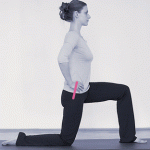November 15, 2017
How to Prepare a Lunge
by Anna Schrefl
There are many different lunge variations in the Pilates programme, on the Wundachair, Reformer, Cadillac or Mat. The lunge is a great exercise to lengthen tight muscles such as the m. iliopsoas and the m. rectus femoris. We all know, from our teaching experience, that tight hip flexors are a common problem. Sitting for hours has a negative impact on our hip flexors and many of our clients do have sitting jobs. “Sitting is the new smoking,” according to Kelly Starrett, DPT. He made a good point. But people who do a lot of exercise (e.g. bicycling) or dancers also complain about tight hip flexors. Whenever the hip flexors need lengthening and release, the different lunge variations are great exercises to add to the Pilates workout. However, you might have experienced that some people do not feel a stretch when they perform a lunge, especially those who have a limited range of motion in the hips.
Very often, people with tight hip flexors and a limited range of motion are compensating the extension of the hips with their lower back. Instead of keeping the pelvis upright, they are arching the lower back, shortening the lumbar-sacral transition. Their pelvis/lower-back area is so tight that there is no movement differentiation possible. There is a simple but effective exercise on the Mat that you can do beforehand to check if someone is avoiding the opening of the hips by shortening the lower back and to get more proprioception in that area.
Exercise
1) Kneeling position: the left leg is in front (90 degrees angle in the knee joint or a bit more, but not less). The pelvis has to be on top of the right (kneeling) knee. Try to lengthen the lower back and extend the hip by sending the right sit bone (ischial tuberosity) forward towards the centre line (and towards the pubic bone). This has the effect of opening the hip/groin area.
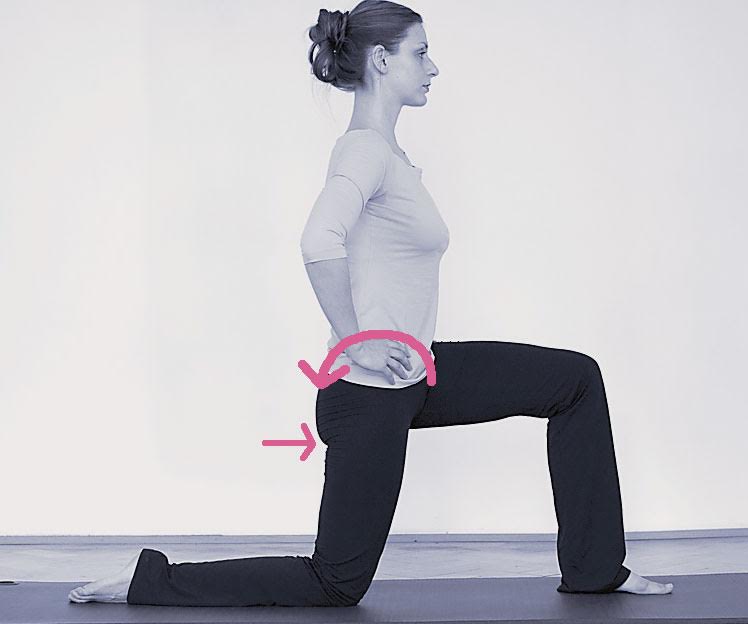
2) Now arch the lower back, rotating the pelvis forward, sending the sit bone backwards, closing/shortening the hip/groin area and the lower back.
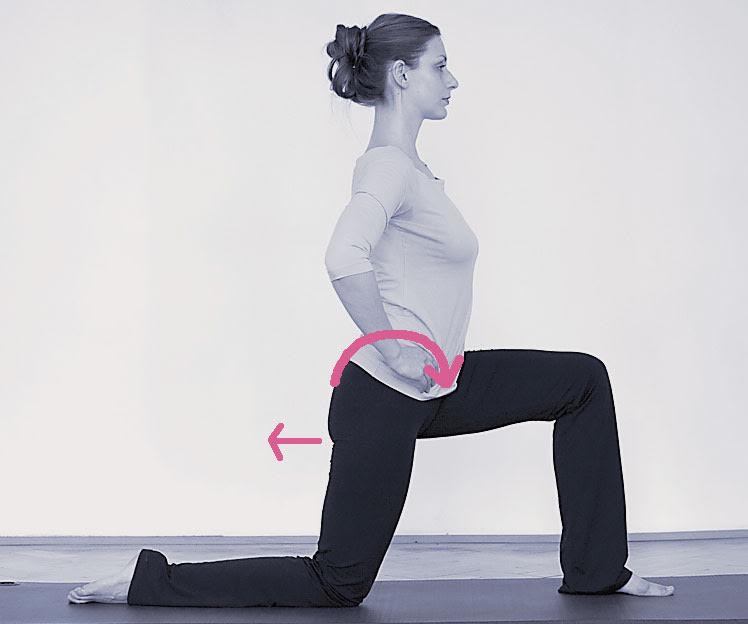
3) Repeat the first step, sending the right sit bone forward, lengthening the lower back and opening the hip even more (keep the hip on top of the knee). Do a couple of these pelvis tilts (actually, pelvic rotations to be more precise).
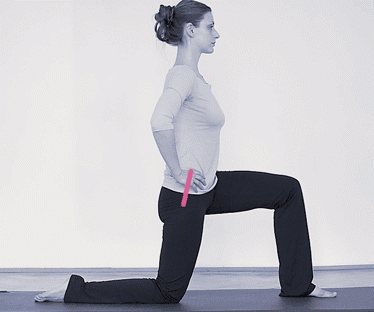
By now, everybody should start to feel at least some lengthening in the hip flexors or a stretch in the thigh muscle (very often, the rectus femoris is more of a problem than the psoas).
If kneeling is a problem, you can put a pad underneath the knee or do the exercise standing (see photo below). Standing is more challenging, though – you really have to be careful that you have the pelvis placed on top of the right knee and that you are not compensating by arching the lower back.
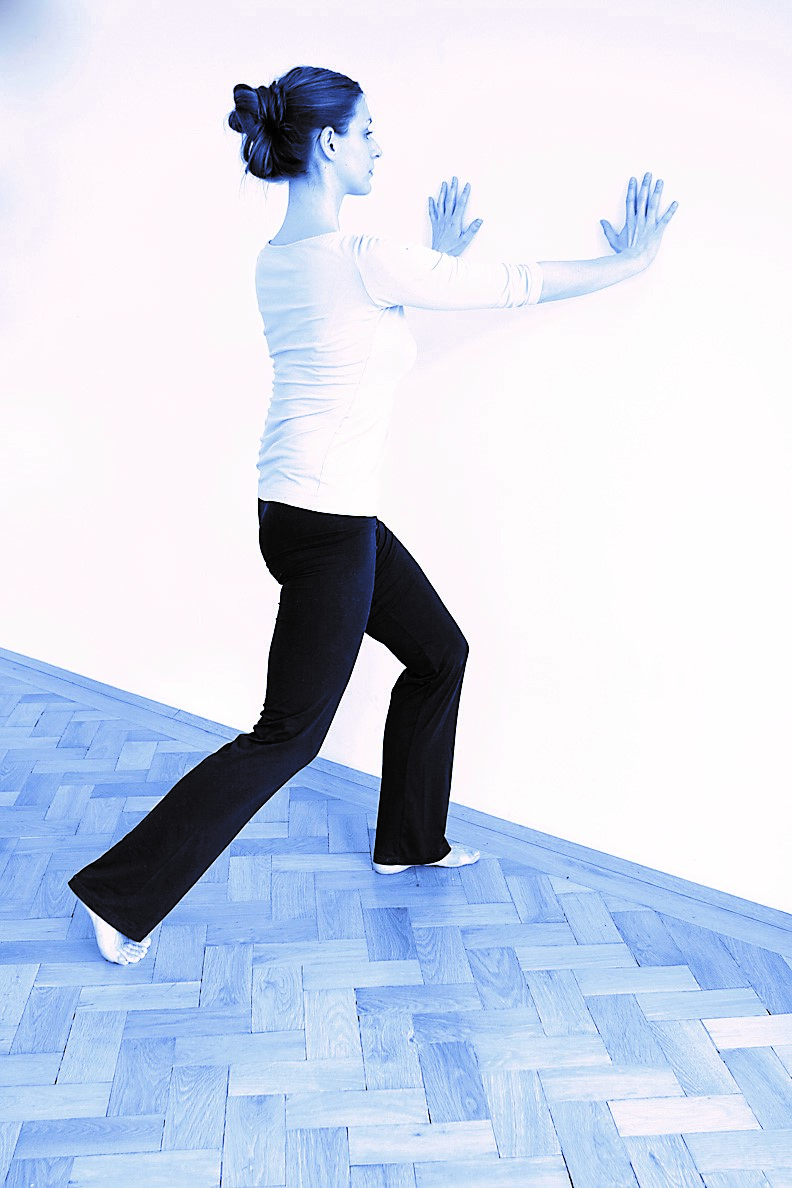
Next step:
4) Now you can extend the back leg but still keep the lower back long, the hip extended. It is very helpful to send the right sit bone forward and push at the same time the right heel back. Lift the chest and feel the lengthening of the ventral muscle sling.
Some might not be able to fully extend the back-leg. For other people, the first step (kneeling) might be already enough. When you start to feel the stretch, try to breathe into the lines of tension and try to extend those lines.
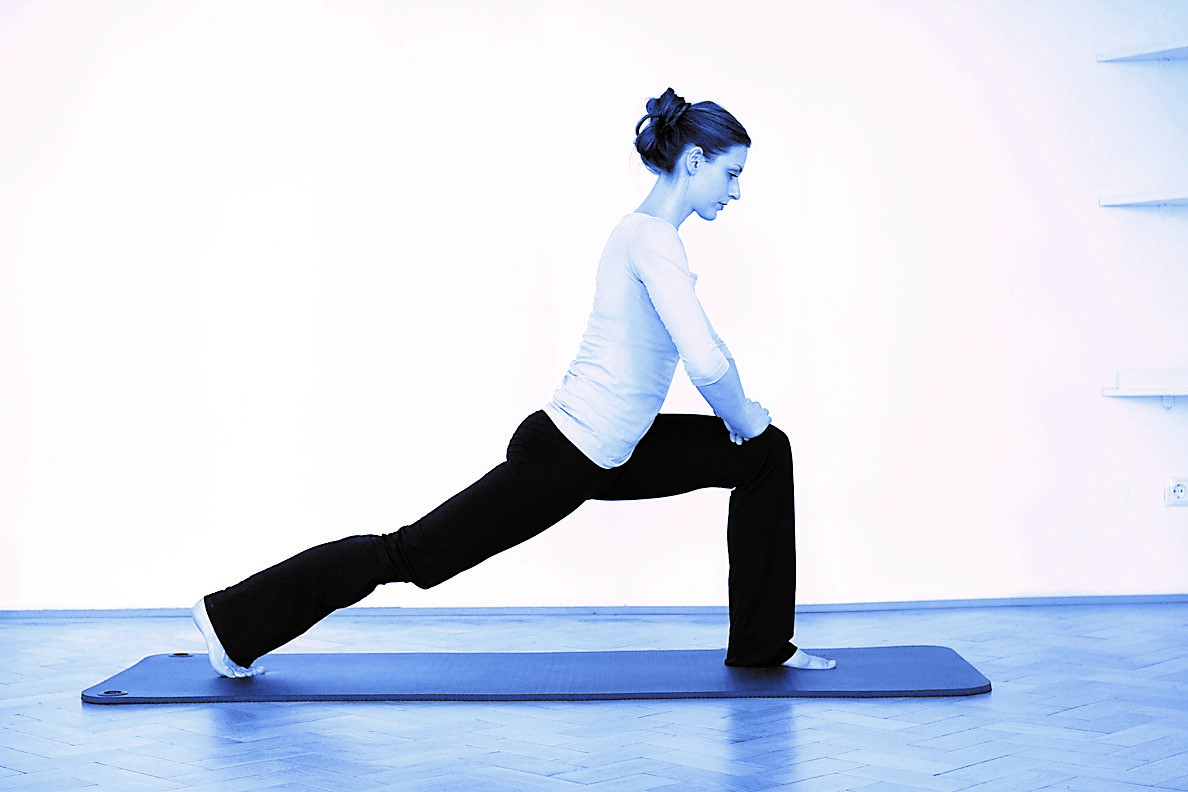
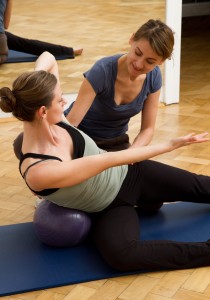 Anna Schrefl
Anna Schrefl
Anna Schrefl studied contemporary dance at the Amsterdam School of Arts and the Modern Dance Academy in Rotterdam. In 2001 she finalized her Pilates training in New York with Romana Kryzanowska. She completed her Pilates Teacher Trainer training under Ton Voogt and Michael Fritzke and established in 2006 the “Pilates System Europe – Certification Program” with the supervision of Ton and Michael. Anna gives company training and seminars for classical and contemporary dancers, actors, and musicians for over 15 years. She teaches special seminars for Pilates trainers around Europe and works as a freelance choreographer.
Anna Schrefl is the director of Pilates System Europe® in Vienna and a certified lecturer of the Spiraldynamik® methode.
Foto: Bluhm
Anna Schrefl
For the time being this article is only available to subscribers.
Click Here To For Immediate Delivery of Full Article

